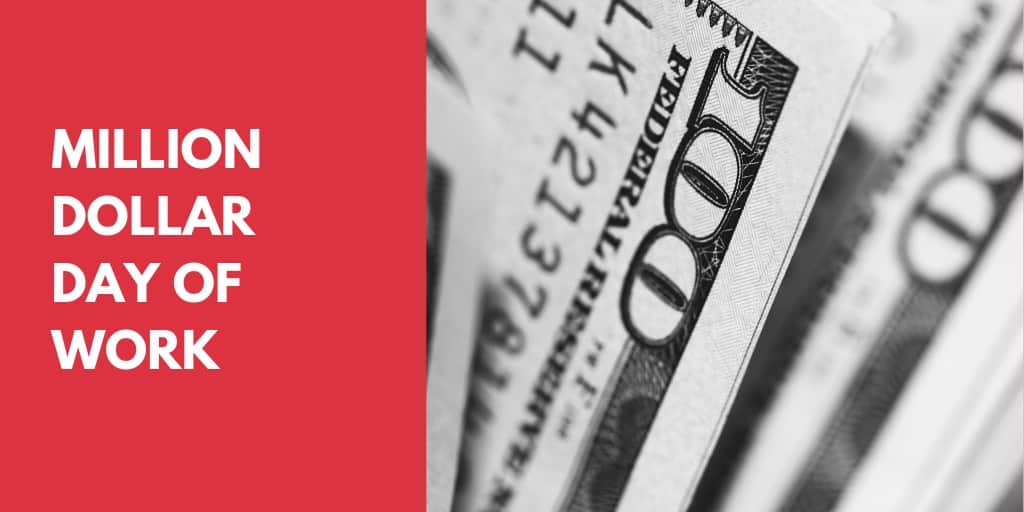As someone who has worked in the federal system for over 20 years, I know firsthand the importance of understanding your job, your benefits, and your finances.
One of the most significant benefits of being a federal employee is access to a defined benefit pension plan. (i.e. the FERS annuity!)
While we all know the FERS annuity is an amazing deal, when it comes to calculating your net worth, do you know how to value your retirement plan? Should you even consider your FERS pension when calculating your net worth or your financial independence (FI) goals?
For me, the answer is a hard no. As a self-proclaimed pension nerd, I’m excited to dive into this topic share the four reasons why my wife (state pension) and I (federal pension) have chosen not to include our pensions in our net worth or FI calculations.
So let’s take a look at the 4 reasons we avoid including our pensions in net worth calculations.
Get Gov Worker’s top 4 tips for federal employees!Table of Contents
- Reason #1 we don’t include our pension in our net worth: uncertainty about pension amount
- Reason #2 we don’t include our pension in our net worth: age restrictions
- Reason #3 we don’t include our pension in our net worth: financial independence
- Reason #4 we don’t include our pension in our net worth: pension solvency
- Frequently asked questions
Please do not confuse my personal blog for financial advice, tax advice or an official position of the U.S. Government. This post may contain affiliate links. If you make a purchase after clicking on a link, I get a small percentage of the sale at no additional cost to you.
Reason #1 we don’t include our pension in our net worth: uncertainty about pension amount
One of the primary reasons we’ve decided not to include our pensions in our FI calculations is the uncertainty about the amount of our pensions. While federal pensions are relatively straightforward to calculate, state pensions can be quite complicated.
In my wife’s case, the calculation method has so many decision trees that it’s nearly impossible to make a reasonable estimation of what her pension might be without knowing the exact date she will quit her job.
Without knowing how much we’ll receive in pensions, we can’t accurately estimate a present value of these pensions to include in our net worth. And while knowing we get a guaranteed source of income in our 60’s is a comforting thought, the picture is a little too hazy to allow us to quit our jobs tomorrow.
My goal is to retire early from the government at age 50 with a deferred FERS annuity. I feel confident in calculating what my deferred retirement might look like in that case. But there’s always a chance I could be forced from my government job sooner than I would voluntarily separate and I don’t want to overestimate this resource.
What about the cash value of the pension?
While there may be uncertainty about the size of our pension income in retirement, it is true that if you leave government, there is a way to “cash out” your retirement. In this case, you’re only getting a refund for your own contributions towards your retirement. (If you want to do this, you’ll need to fill out form SF-3106) Since I am a Type-K FERS employee, I only contribute a small fraction on my salary to the pension, and the government puts in a much larger contribution each paycheck. Cashing out my pension would give me pennies on the dollar. Because this is such a bad deal, it’s not even worth considering this cash value.
(Note that if you’re a FERS-FRAE employee with only a few years of service and a very long time horizon until retirement, you may be better off investing your retirement contributions until retirement. However, you’ll be losing out on all government contributions to your pension in that case. If you think you might be better off withdrawing the cash value of your pension, you should definitely talk with a financial planner or other professional before making such a big decision.)
Reason #2 we don’t include our pension in our net worth: age restrictions
Another reason we’ve decided not to include our pensions in our FI calculations is that both our pensions are structured in a way that we cannot access them until we are at our minimum retirement ages. We’re both about 15 years away from being able to receive our pensions.
Conceivably, it is possible to calculate the present value of a future stream of payments. And we could add that number to our net worth calculation. But that doesn’t really change our current living situation. If we were to both lose our jobs, it’s not like we could sustain ourselves on this future income stream. So while we could add this pension value to our net worth, it seems kind of pointless.
Honestly, if you are trying to inflate your net worth to impress other people, that’s not a good reason to know your net worth. We do care a lot about our net worth, but that is because we use it as a way to measure how close we are to financial independence.
Reason #3 we don’t include our pension in our net worth: financial independence
It’s no secret that I want to retire at age 50 and take a deferred retirement. And having a FERS pension will definitely make retiring at age 50 easier than if I didn’t have a pension. However, when looking at income needs in retirement (or early retirement), it’s easier to look at cash flow calculations instead of a net worth number.
We track every penny we spend every month. (And I strongly recommend you do too!) So it’s no mystery to us how much money we will need in retirement. In general, we plan to use “the 4% rule” to withdraw from our portfolio in retirement. In other words, when we’ve amassed a portfolio that is 25x larger than our annual expenses, we should be able to retire and live off of our portfolio forever.
Some people are quick to point out that the 4% rule does not have 100% success rate. And it is true, if you were to retire right before a stock market crash, there scenarios where your money runs out before your life does. (Less people seem to point out that many times you die with even more money than you retired with when using the 4% rule). At any rate, if you use a calculator like cFIREsim, you can see the odds of success with any type of portfolio, real estate cash flow, and uncertainty. I talked to the creator of cFIREsim and they even added in a way to see how a FERS deferred pension changes your odds of success in retirement.
Not surprisingly, the FERS pension greatly raises the odds of success of an early retirement with a 4% withdrawal rate. Therefore, we prefer to not include the value of a pension in our net worth calculation, but instead look at it as a factor of safety in our retirement plans.
Reason #4 we don’t include our pension in our net worth: pension solvency
This is less of an issue for federal pensions and more of an issue for state or corporate pensions.
Another reason we’ve decided not to include our pensions in our FI calculations is the risk of pension instability. While we believe that our pensions are relatively safe, there is still a chance that they might not be there when we retire. Pensions are ultimately just promises, and sometimes promises are broken.
While we think it’s unlikely that our federal and state pensions will disappear, it’s not impossible. There have been instances of private sector pensions dissolving when companies declare bankruptcy, leaving retirees in a difficult financial situation. It’s essential to consider this possibility when planning for our financial future. Luckily, we live in a state with the most solvent state retirement plan. However, states like California and Illinois have massively underfunded their state retirement system and what happens with these state pensions over the next 20 years is a big unanswered question.
I also think that as FERS employees, our pension is very safe. The only cases I can imagine where the government does not pay our FERS pension is some post-apocalyptic scenario. In that case, I think we all have bigger problems to worry about than the lack of our FERS pension. And no amount of financial planning would be able to spare you from that disaster. (Unless you’ve got an underground bunker as part of your retirement plans.)
Frequently asked questions
Should I include my pension in my net worth calculation?
It’s up to you. Including your pension can give you a bigger number to brag about at your yacht club, but it can also be difficult to estimate the amount of your future pension income.
Can I access my pension before retirement age?
While I can’t answer this question for every retirement plan, if you’re a FERS employee, the earliest you can access your pension is your minimum retirement age.
Is it safe to rely on my pension income in retirement?
It definitely depends on your pension plan. While FERS is one of the safest pensions around, having a diverse set of income sources and investments in retirement is definitely the best plan.
What other factors should I consider when deciding whether to include my pension in my FI calculations?
You should consider the financial health of your employer or government, potential changes in pension laws or your length of service, and your personal financial goals when deciding whether to include your pension in your FI calculations.




